When driving, a car owner can identify problems and issues with the vehicle just by listening and feeling how it acts on the road.
One of the most common problems that drivers face is tire wobbles caused by different factors. If your tires are wobbling, what could be the issue? Here’s all you need to know.
Tire wobbling is caused by flat spots, suspension problems, misaligned tires, or unbalanced wheels. If you notice a tire wobble, you need to inspect the tires immediately for inflation and wear issues. To avoid further damage, have the tires checked at the tire center to identify the primary cause.
Read on to learn more about why your tire is wobbling, what causes it, how to fix it, and what to do when it happens!
Just like other tire problems, tire wobbling can be a dangerous and scary experience for any driver because it leads to reduced control.
Wobbling is a bad sign and an indicator that you have problems with your tires; therefore, drivers question why it’s happening.
If you don’t know why your tires are behaving this way, here are some possible causes.
Unbalanced Wheels
As a car owner, you need to prioritize wheel alignment if you want your tires to function correctly.
The tire shop should simultaneously perform wheel balancing and alignment when you change your tires to ensure that the tires roll smoothly on the road without wobbling.
However, if this step is not done, you’ll notice your tires wobble at high speeds.
Balanced wheels have weights attached to them to even out the weight on all sides.
Therefore, if you don’t have any other damage and haven’t hit a pothole, the unbalanced wheels could be causing the wobble.
Pothole Or Kerb Strikes
If you drive on rough roads with lots of potholes and curbs, this could cause damage to your suspension and wheels, leading to a tire wobble.
At high speeds, the damage to your rim will be more extensive, and the vibrations will travel to the steering wheel, making it harder to drive.
Misaligned Or Damaged Suspension
Your vehicle’s suspension system has shock-absorbing components such as springs and connects the cars to the wheels.
When your car’s alignment is off, it affects the steering wheel and suspension; therefore, you can’t keep the car straight when driving.
If suspension components are damaged, it becomes harder to address the problem. Your car will need a thorough inspection at the tire shop to check the state of the wheels and suspension.
Therefore, if your tires are wobbling, this might be the problem.
Improper Wheel Alignment
Pay special attention to a sudden alignment change. An alignment wobble presents itself gradually and will cause irregular tire wear, increasing the wobbles.
Apart from balancing, your tires need to be aligned as soon as you buy new tires.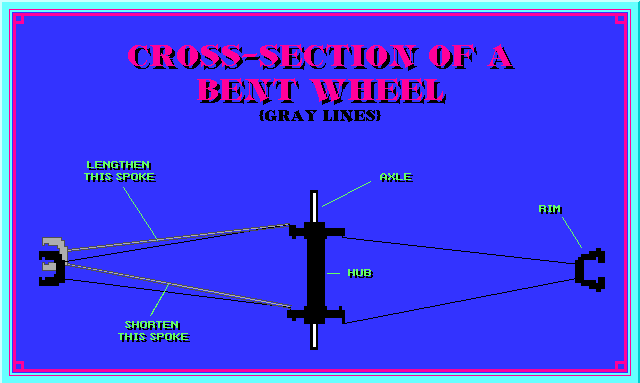 Every tire manufacturer and retailer provides wheel alignment services as part of the auto care package.
Every tire manufacturer and retailer provides wheel alignment services as part of the auto care package.
Therefore, if you don’t get your tires and wheels aligned, you’ll start experiencing a lot of instability on the road.
Flat Areas
When the tire loses air pressure, it develops flat areas, leading to a puncture or a tire blowout.
NHTSA reports that tire failures that tire failure causes approximately 11,000 crashes every year, and these flat tires are some of the leading causes.
If your car has a flat area, the car’s weight flattens the contact patch when driving, causing a vibration or wobble.
Once your car develops mild, permanent flat spots, it leads to irregular wear, poor alignment, and balance problems which continuously increase the wobbling until you replace the tires.
Improper Wear
Almost all the above factors can cause improper tire wear, causing the tire to become asymmetrical and increasing the occurrence of wobbles.
If you don’t address this problem as soon as it develops, it could escalate and lead to tire failure.
If you suddenly feel the wobbly tires when driving, you might be wondering what to do and whether it’s safe to continue operating.
While you might still manage to drive for a few miles, the noisy and vibrating is irritating and could lead to further damage to your tires, wheels, suspension, and steering wheel.
Wobbling is a bad sign; therefore, it’s advisable to have it fixed as soon as you can. Have the tire professionals take a look to determine the specific cause.
If you want to fix a wobble tire, you have to first identify when it began and share this information with your mechanic or tire expert.
A professional is better suited to advise on how to fix the issue causing the wobbling. Therefore, you should have it checked as soon as you feel it to prevent further damage.
To prevent the recurrence of tire wobbles, you should also avoid hitting potholes and curbs, especially when driving at high speed. This affects the wheel performance, leading to misalignment.
Tire wobbling also happens when driving at lower speeds; therefore, you need to pay attention to any slight changes.
Additionally, also take your tires for alignment and balancing as recommended by the manufacturer or when you notice any problems.
If you want to know more, you can also check our posts on how long will tires last with bad alignment, how common are flat tires, and why do tires have treads.
Tire wobbling is a problem for most car owners and can be a scary experience when it happens when driving.
Wobbling can result from suspension problems, misaligned tires, unbalanced tires, and flat spot areas. Once it appears on your car, it could worsen and affect other components like the steering wheel.
Therefore, as soon as you feel your tires wobbling, check for any wear and inflation issues and take it to the tire center to a professional for a better diagnosis.
Driving on wobbly tires is an uncomfortable experience because the car is unstable. To make things easier for yourself, have the problem fixed first before proceeding with your journey. Avoid self-diagnosis, especially if you are not sure of the specific cause.
If your bicycle’s wheel is wobbly, there are several possible causes and solutions to this problem. Read on to learn how to diagnose and fix a wobbly bike wheel. Here are some common causes and solutions. The first step in repairing a wobbly bike wheel is to check the wheel bearings. By holding the bearings in the axle position, you can check their condition. Make sure that they are tightly tightened to eliminate any play. “No play” means no sticking or binding.
A wobbly bike wheel can be caused by several different causes, including loose spokes. Loose spokes are a common cause of wobbly biking and can be easily fixed by tightening them.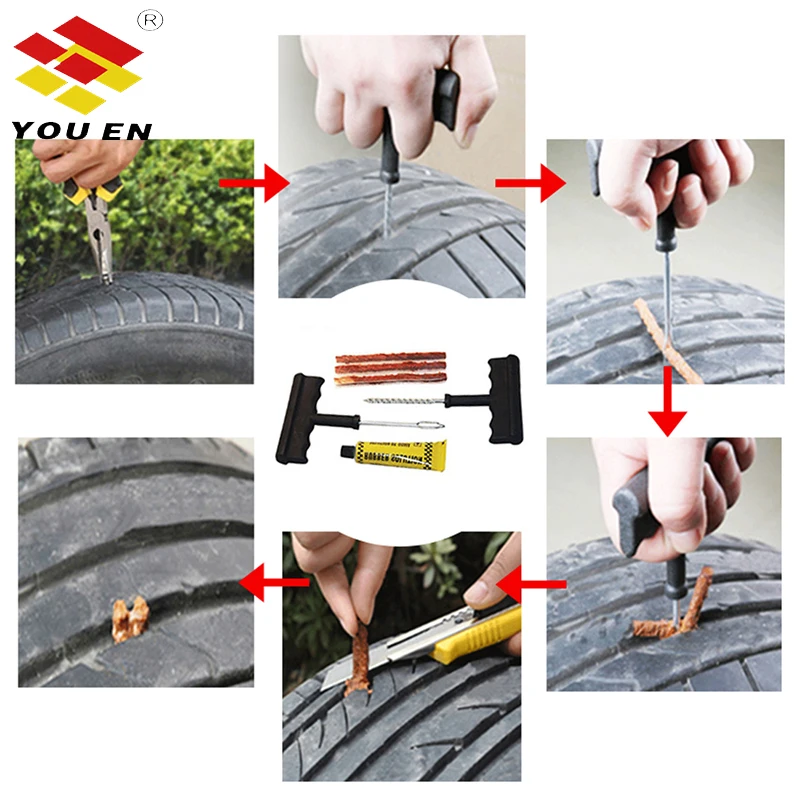 If the wobble is frequent, a new rim may be required. A loose headset is another cause, and the frame or fork may need to be replaced. A constant speed will amplify the wobble.
If the wobble is frequent, a new rim may be required. A loose headset is another cause, and the frame or fork may need to be replaced. A constant speed will amplify the wobble.
A wrongly-seated tire bead can also cause wobbly wheels. If this is the case, you can deflate the tire and re-seat the bead. Rotating the wheel can help you identify any defects in your tire bead. The bead should be the same distance from the rim as the sidewalls are. If you suspect that your tire is defective, the bead may be seated in the correct location. The wobble will disappear.
If your bicycle wheel is wobbly, it may have a bent wheel, damaged tires, or loose spokes. In any case, it is important to check the spokes for tightness. Check the hub area, if necessary, and clean all bike parts regularly. To correct wobble, you can tighten the left side spokes. Before you ride, make sure to inspect the spokes.
Wobbly wheels can also be caused by a loose hub. If you find this, you should replace it or get a new bike wheel. This is a more expensive fix, but it’s worth the risk of an accident. Although it may be tempting to risk an injury, it is better not to cause more wobbles. Continue reading to learn how to fix wobbly bike wheels.
This is a more expensive fix, but it’s worth the risk of an accident. Although it may be tempting to risk an injury, it is better not to cause more wobbles. Continue reading to learn how to fix wobbly bike wheels.
A wobbly bicycle wheel could be caused by worn cup-and-cone bearings. If the hub is too loose, the wheel might be out of true and slightly buckled. To test the bearings, hold the wheel in the axle position and use a permanent marker to determine whether the wobble is caused by the cones or the rim bend. This measurement should be consistent across the spokes.
A worn-out wheel bearing must be replaced. A worn-out wheel will feel rough and make a ticking noise while cycling. It is best to replace worn-out bearings. If necessary, be sure to re-grease the bearings. Two sets of bearings are found on most bikes. One set is for the front and one for the rear. Wearing bearings can cause wheels to wobble at high speeds, and brake noise.
Another common reason for wobbly bicycle wheels is a bent rear wheel. A crash or uneven terrain could cause a bent rim. In addition, the uneven spoke tension may have caused the rim to bend and make it wobbly. Misplaced tires may also cause wobbly riding and should be checked as soon as possible. These problems can be prevented from getting worse by taking care of them.
A crash or uneven terrain could cause a bent rim. In addition, the uneven spoke tension may have caused the rim to bend and make it wobbly. Misplaced tires may also cause wobbly riding and should be checked as soon as possible. These problems can be prevented from getting worse by taking care of them.
You might be wondering what to do if your bike wheel is wobbly. The answer is simple – simply flip your bike upside down and check the rim with a permanent marker. The area of contact will be the most significant lateral deviation in either direction. You should repair both the wobbles at once if you notice more than one. A permanent marker will be easier to use when you know where each spoke goes.
First, look for warped areas. These are areas where spokes need to be tightened. These are the areas where your wheel has more warp than usual. Start with the most warped part of the wheel, and work your way down. If you see a single warp, tighten the spokes using a truing stand.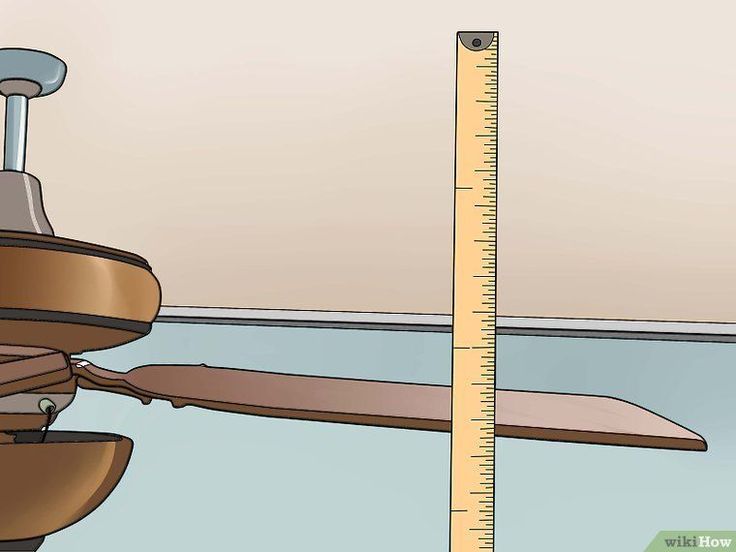
Loose spokes can cause wobbly bikes. Tightening them is an easy way to fix a wobbly wheel. Tightening the spokes will help prevent the wobble from occurring again. In some cases, too-tight spokes may also cause the wheel to wobble. To stop the wobble, tighten the spokes one-half turn at a stretch.
Another cause of wobbling bike wheels is a loose hub. This can cause wobbling in the rear wheel. To correct wobble, tighten the cones. A locknut will hold them in place. You can also replace the hub and spokes of a wobbly bicycle wheel. Either way, it is much better to fix the problem than risk an accident.
To true a wheel, you can turn the spoke nipples to tighten or loosen them. To keep the rim round, loosen the spokes on the opposite side of the tightened one. Next, use a caliper to rotate the wheel. For a more precise truing, turn it a quarter-turn. Check for flat patches after each set of rotations.
If you have a wobbly bicycle wheel, you can either go to a bike shop or attempt to do it yourself.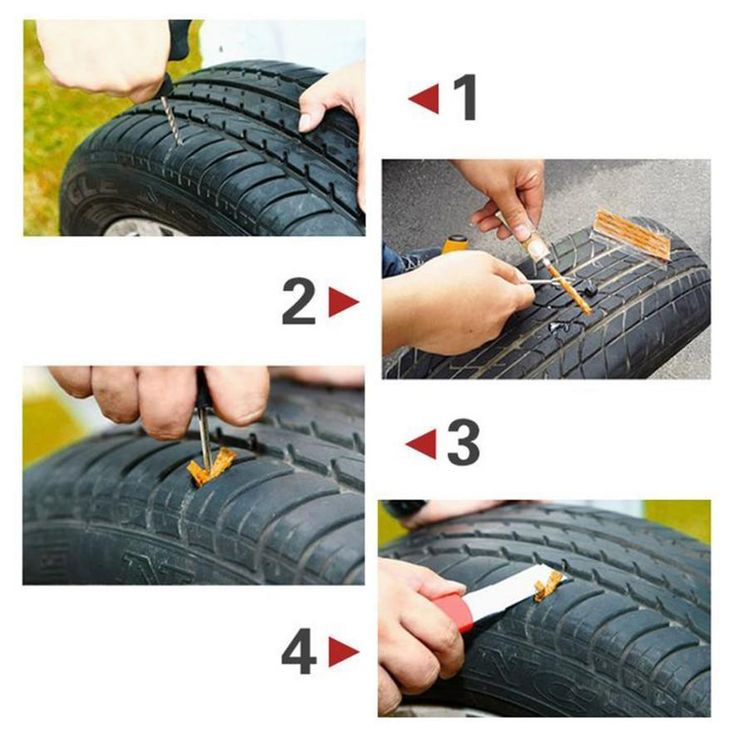 Bike shops usually charge between $20 and $30 to fix a wobbly bike wheel. They have the right equipment to do this. To ensure the wheel is straight, a truing stand and leg strap are required. A spoke wrench is essential for fixing a wobbly bike wheel. A spoke wrench comes in various sizes. If you can’t find one, you can use a spoke wrench on the spoke’s D-ring.
Bike shops usually charge between $20 and $30 to fix a wobbly bike wheel. They have the right equipment to do this. To ensure the wheel is straight, a truing stand and leg strap are required. A spoke wrench is essential for fixing a wobbly bike wheel. A spoke wrench comes in various sizes. If you can’t find one, you can use a spoke wrench on the spoke’s D-ring.
To fix a wobbly bike wheel, you need to know what’s causing it. Sometimes, a wobbly bike tire may be the cause of the wobble. Depending on where the wobble is located, you can try a simple method such as deflating the tire. Next, you can re-seat your bead and try again. If this doesn’t work, you can try another way, such as adjusting the bead to the rim.
Most riders have experienced riding with a wobbly bike wheel at one time or another. Worse yet, the wobble can be dangerous. Worse, the wheel can fall off, cracking and breaking the spokes. So what causes a wobbly bike wheel? Listed below are some common causes. Continue reading to find the best solution to your wobbly bicycle wheel.
Continue reading to find the best solution to your wobbly bicycle wheel.
Shimmying refers to excessive oscillation of the front wheel. This is commonly known as a “shimmy” and is caused by excessive lateral load on the frame and wheel. Shimmies are caused by the bike-and rider system oscillating at a high frequency. This makes it difficult for the rider’s to respond appropriately.
Another common cause of a wobbly bike wheel is loose spokes. Check the other wheels in the same area to determine if any spokes are loose. Then, tighten the spokes until you notice a twang or good enough to ride on. If your wobbly wheel keeps happening, you might need to replace it.
There could be many reasons your wobbly bike wheels have loose spokes. A poor adjustment could cause the hub to be loose. You should first check the hub if the wheel is loose. It can result in uneven tension which can lead to wobbly wheels. Another cause of wobbling bike wheels is damaged hubs or cup-and-cone bearings.
Worse yet, the hub can also be broken. This causes the rear bike wheel to wobble. The seat stay and chainstays exert pressure on the hub, which will result in a wobbly bike wheel. To fix this problem, first, you need to check the tire pressure. If there is enough air in your tire, you can lower the pressure and rebalance it.
Untrued, buckled, or incorrectly adjusted bicycle wheel hubs can cause a wobbly bike wheel. This is the most common reason for wobbly bikes. A loose head tube bolt or hub may also be a cause. Tightening the bolts should correct the wobbling problem. Other common causes of a wobbly bike wheel include loose spokes and screws, and brakes.
Worn-out wheels can also cause wobbly bikes. Worn rims can cause uneven forces to be applied to the spokes, leading to a damaged wheel. The cassette and chain bend the bearings of the back wheel first. This is how they usually break. If the bearings are not tight, you can tighten the left side spokes. If this fails, the rim may be too bent to adjust the spoke tension.
There are many reasons why a front wheel may become loose. Lastly, a wheel may be rubbing against something. A Road Force Balancer or tire matcher kit can be used to fix wobbly wheels. These will help you pinpoint the root cause of your wobble.
Auto repair ,
Each of the drivers may have such a situation when a tubeless tire deflated on the way, but the spare tire was not in the car, or this is already the second wheel for a long road. In this case, there are only two ways out - one way or another, wait for help from others (take the wheel to a tire fitting, call to bring a spare tire, call a tow truck, etc.), or you can repair a punctured tire yourself.
Before moving on to the very topic of the question, it is worthwhile to carefully study all aspects of the operation of tubeless tires, but their widespread use has unequivocally proved that they have a clear advantage over chamber wheels.
The main advantage for the driver is the ease of repair, because if a wheel with a chamber is punctured, it will have to be removed and disassembled in order to remove the chamber, and only then carry out the repair itself, and then you will have to do laborious work (if it is done without special equipment) in reverse order. Tubeless tires, in most cases, can be repaired without dismantling the wheel, and without even removing it from the car.
In addition, when punctured, a tubeless tire deflates for a long time, and sometimes drivers ride with several nails or self-tapping screws in the wheel without noticing the problem for up to several months. Therefore, if necessary, you can pump up a wheel with a puncture and have time to get to the nearest tire service.
However, there are several nuances that complicate operation. For example, with a strong impact on the edge of a pit or a curb, the tire can depressurize and instantly deflate, or if the wheel is not completely deflated, it can disassemble during a turn, which will lead to an instant descent.
Also, such a wheel is very difficult to inflate with a conventional pump or a mobile compressor, if it is disassembled (flew off the disk), in this case a professional compressor with high pressure is needed.
Usually, this procedure does not cause any particular difficulties, and the puncture site is easily detected by visual inspection due to the culprit of the damage, which remains in the tread.
Alternatively, a soapy solution of any soapy liquid or plain water may help. By pouring on the tire with our “puncture indicator”, you can quickly find the required place by the emerging air bubbles.
But in the case when there is no soap or water, you have to carefully inspect the tire, while listening to hissing and trying to find the puncture site with your hand. This method helped me repeatedly in deaf and deserted places.
Using tubeless tire repair sealant is the easiest and fastest way to repair a wheel and get to a professional tire shop. If you do not have such a can, then we advise you to buy it, sooner or later - it will save your nerves, time and mood.
And so, if there is a nail or screw left in the tire, then it should not be removed immediately, first we connect the bottle with sealant to the nipple and if the bottle is new, then we completely inflate the wheel, if there is already insufficient pressure left in it, then before repair will need to pump up the wheel to at least 1 atmosphere.
After the sealant is pumped into the wheel, it is necessary to remove the foreign object, and the sealant under air pressure will seal the puncture site from the inside, but remember that this method of repair is temporary, and it will last for about 100 km, which is enough for a visit tire fitting.
It should also be remembered that the use of sealant disturbs the balance, and you cannot drive fast on such a wheel, the safest speed will be about 60 km / h.
This method is the most correct for emergency road repairs. Similar kits are sold in any automotive store, and even in any large supermarket. The kit usually includes a special awl to expand the puncture, a hook for the lace, the laces themselves with bituminous impregnation and, in some cases, glue.
Similar kits are sold in any automotive store, and even in any large supermarket. The kit usually includes a special awl to expand the puncture, a hook for the lace, the laces themselves with bituminous impregnation and, in some cases, glue.
Before carrying out repairs, in order not to spoil the integrity of the cord (the inner hard part of the wheel made of steel wire and nylon thread), it is worth reducing the pressure to 1 atmosphere. Then you should use an awl to clean and widen the hole, without which you will not be able to insert the lace. But you should not immediately remove the awl from the hole, otherwise the tire will release all the pressure and insert the lace will not work.
Then you should put the cord into the eye of the hook, distributing it equally on each side, after which the awl is taken out and the hook with the cord is put into the hole formed, here you should treat the action carefully and not overdo it. The lace should go into the tire about half or a little more (the sealing harness should be folded in half).
After that, it is necessary to pull out the hook with one sharp movement, while the tourniquet will remain in the tire. Repair can be considered completed after cutting off excess pieces of lace and pumping the wheel to the required pressure.
It is worth noting that when using high-quality sets, this repair is considered to be complete and the puncture will be securely closed until the end of the wheel's service life. The only thing that may be required is balancing.
However, if the damage to the wheel is serious, then you will have to take care of buying a new tire. Recall that it is forbidden to repair cuts on the wheel, such a wheel is no longer allowed for operation even as a spare. Therefore, it is better to choose a cheaper tire than to pay for the repair of a cut, especially since today you can choose a new wheel even through your phone or from your home computer by visiting a specialized website. For example, one of these sites is the online store of tires and disks Internet-shina.ru at http://www.internet-shina.ru. 9
© 2007-2023.
The CarsWeek online publication was registered with the Federal Service for Supervision of Communications, Information Technology and Mass Communications (Roskomnadzor) on April 25, 2017.
Registration certificate EL No. FS77-69477. Founder: Sergey Grigoryevich Bogachkov. Chief editor: S. G. Bogachkov.
Editorial e-mail: [email protected]. Editorial phone: +7-915-979-14-25.
The use of site materials is allowed only with the installation of an active hyperlink to CarsWeek.ru. 16+
Another season of changing shoes is approaching. And you may remember that on one of the tires after the last winter/summer there is a jamb - a small bump. I don’t want to run to the store for the sake of one new tire. We understand. Or maybe it looks even better if repaired?
Yes, not every wheel that has met with a nail, rebar sticking out of the ground or a sharp stone on the road is considered damaged. Everything, of course, depends on the scale of the damage and its location on the tire itself. Some are easily repaired, while others are simply impossible to do - the tire can only be sent to the trash.
A bulge on a wheel, referred to by drivers as a bump or bulge, is the most common tire sidewall defect. It appears due to a collision with an obstacle or after falling into a pit, more often at high speed. The threads of the sidewall carcass are easily damaged by impact, and the tire at this point can no longer hold the load and air pressure - swelling appears. A small bump sooner or later turns into a big one, and driving with such a defect is dangerous - the wheel can shoot at any moment. At high speed, this is fraught with loss of control, departure from the road and a rollover.
The quality of roads in Kazakhstan contributes to the appearance of bulges on tires
Some types of bulges are repairable, although this is a temporary measure. Not a single patch can restore the factory rigidity. Ideally, change the tire.
Not a single patch can restore the factory rigidity. Ideally, change the tire.
Special cord patches can extend the life of a tire with a herniation, even if the swelling has appeared on the tread. The sidewall is a different story. If the swelling appeared at a distance of more than 40 mm from the side, it can be repaired. If not, then the wheel needs to be replaced. Blisters on low profile tires are most often non-repairable.
For maximum safety when riding with a repaired bump, insert the tube. This is an inexpensive and reliable solution. On our market, you can find cameras made in China and Russia, the latter are slightly more expensive, but also of better quality.
The elimination of a side cut is a serious operation, therefore, as in the case of a bump, you will have to go to the professionals. We need cord patches, fortunately in our time they are of different sizes and with a different number of layers. And if you do it wisely, then you can't do without special tools and vulcanization.
A cut, by the way, cannot be healed in all cases. If the gap is in the shoulder area of the tire, it is unlikely that anyone will undertake to repair it, since no guarantees can be given here. However, our Kulibins take on even the most difficult cases, cutting out parts of the sidewalls from the tires and even weaving the cord on their own.
Tire overhaul. We would not put such a wheel on ourselves
Low profile tires can be repaired, but more difficult. A tear in the sidewall is easier to seal on tires with a medium or high profile.
Sometimes a cut is confused with a pluck. This is when the outer layer of the sidewall caught on something sharp, a tear formed, but the frame itself remained intact. There is nothing wrong with that, although the drivers at the tire fitting company successfully repair the cut, for which they take it accordingly.
If a piece of rubber remains on the sidewall, then glue it with ordinary superglue (101st).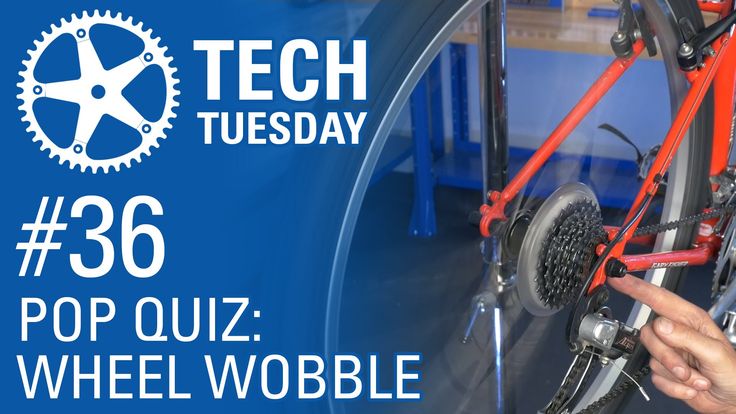 If it came off, then it is better to cover it with raw rubber and vulcanize. Leaving the pluck bare is not recommended, because the tire carcass, often consisting of a metal cord, will quickly corrode.
If it came off, then it is better to cover it with raw rubber and vulcanize. Leaving the pluck bare is not recommended, because the tire carcass, often consisting of a metal cord, will quickly corrode.
In Europe, defective or used tires are perforated before being sent for scrap to prevent their resale and possible operation. But they don’t know that we have such holes on the sidewall patched once or twice
Cuts and hernias are not the only possible damage to the side of the tire. You can also spoil the side ring, in the process of changing shoes, for example. If it’s for garlic, then such a tire is already dangerous. Sooner or later, the tire pressure and the load in motion will start to squeeze the rubber off the rim - a wheel explosion can occur.
This ailment is repaired if the wire ring - the base - is intact. There are no special technologies and materials to correct this particular problem, but most often craftsmen use a two-component composition for chemical (also called cold) vulcanization. After mixing, the mass is pressed into a fat-free damage. Compound manufacturers recommend waiting 72 hours before mounting a tire. Of course, our masters do not pay attention to this condition - they put the tire right away. And it’s good if the wheel is flat because of this at night in the parking lot, and not on the road.
After mixing, the mass is pressed into a fat-free damage. Compound manufacturers recommend waiting 72 hours before mounting a tire. Of course, our masters do not pay attention to this condition - they put the tire right away. And it’s good if the wheel is flat because of this at night in the parking lot, and not on the road.
If the side ring tears are barely noticeable, but the wheel still deflates, then you can use a special liquid - a bead seal designed to seal a tubeless tire.
These seals have been used in motorsport for some time. In particular, in the American Formula D Drift Series, drivers used compounds to keep the tire on the rim even with minimal tire pressure. Now they are banned.
Pay attention to the left rear wheel of the Nissan Silvia S13. Due to too low pressure, it was literally taken off the disk under load
Every schoolchild has faced this problem when patching the inner tube of his bike after hitting something sharp. Repairing a car tire puncture with your own hands will also not be difficult even on the road. But for this you will need a pump (or compressor) and a universal tire repair kit with harnesses. All this is sold at any car market or gas station.
Repairing a car tire puncture with your own hands will also not be difficult even on the road. But for this you will need a pump (or compressor) and a universal tire repair kit with harnesses. All this is sold at any car market or gas station.
Repairing a tire on the side of the road with harnesses
The process is simple. If we are talking about the front wheels, then in most cases the wheel can not even be removed, it is enough to turn the steering wheel in the right direction, find the puncture site and carry out repairs. First, the hole is cleaned with a helical awl from the set. The tourniquet itself is smeared with glue and tucked into the eye of the awl, after which it is inserted into the tire hole. With a sharp movement, the tool is removed, and the tourniquet remains in place and clogs the hole. The tails are cut with a knife, but not at the root, it is recommended to leave about 20 mm. The tire is inflated and checked.
Sometimes a nail or self-tapping screw clogs the hole by itself, remaining in it. If you see a hat in a tread, do not rush to pull it out. While the pressure is holding, move to vulcanize. And sometimes they drive with a screw in a tire for weeks.
If you see a hat in a tread, do not rush to pull it out. While the pressure is holding, move to vulcanize. And sometimes they drive with a screw in a tire for weeks.
Repair of a puncture at a tire shop
Punctures are also repaired with harnesses at a specialized service, although among professionals such repairs are not considered long-term. After a few months, the flagella dry out and can let air through. There are more advanced methods like cold and hot vulcanization. The latter is more reliable. In this case, the hole is sealed with an elastic patch, and the funnel from a foreign object is filled with a special compound. After that, a vulcanizer is put on the tire, it heats up the rubber and solders it.
In addition to the plaster, the puncture is also repaired with special cord fungi. Craftsmen process the puncture site: drill it and treat the surface with a tool to roughen it. Then the repair area is lubricated with glue (it is also called cement) and a fungus is introduced. This is done from the inside of the tire. The cap of the fungus is rolled, and the excess legs are simply cut off from the outside.
This is done from the inside of the tire. The cap of the fungus is rolled, and the excess legs are simply cut off from the outside.
Puncture repair with sealant
With the advent of tubeless wheels, and later run flat tires, many automakers began to abandon spare wheels. Instead, repair kits with compressors are supplied with the machines. A repair kit is essentially a bottle of pressurized sealant. Later, such spray cans began to appear on the shelves of ordinary car dealerships.
This method has not taken root in the CIS, because the condition of the roads makes it necessary to have at least a stowaway in the kit, but it can also be considered as a method of repair on the road.
The car must be jacked up and sealant must be pumped into the damaged wheel through the nipple. Next, you should spin the wheel, then pump it up, lower the car and drive a few hundred meters.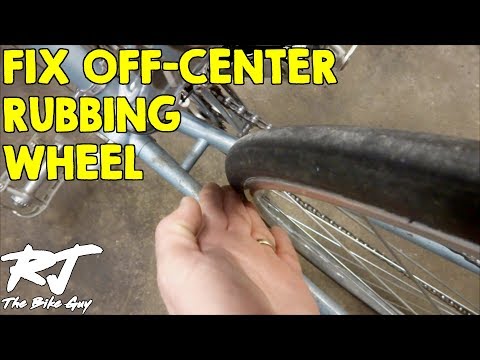 If the tire tightness has not been restored, repeat the procedure.
If the tire tightness has not been restored, repeat the procedure.
For commercial vehicles, cutting the tread with a special device (regrower) is a common thing. Moreover, such tire retreading is provided by the factory (marked REGROOVABLE on the sidewall) to increase the service life. But there are entrepreneurs who undertake to deepen the grooves in tires for passenger cars. But they are not intended for such an operation. Often used tires for sale are “refreshed” in this way. Be careful!
What is the danger?
The worst option is that the retreaded tire will shoot out on the road, as the master can damage the undertread layer when deepening the grooves. Such a tire will not be able to hold pressure at some point. There will be a boom! At best, the tire will indeed last a little longer, but is the game worth the candle? We think it's not worth it.
How is cutting made?
A regrower is used to cut the tread. Roughly speaking, this is a large soldering iron with interchangeable tips of various shapes. It goes through rubber like a knife through butter.
Roughly speaking, this is a large soldering iron with interchangeable tips of various shapes. It goes through rubber like a knife through butter.
If the tire is for passenger cars, then it is worth taking on a regrower only in one case - when part of the tread pattern was welded with "new" rubber during repair. This is where threading comes in handy in order to restore the grooves and symmetry of the tread.
Vehicle operation is prohibited if:
— tires have a residual tread height of less than 1.6 mm;
- tires have punctures, cuts, ruptures that expose the cord, as well as delamination of the carcass, delamination of the tread and sidewall;
- tires in size or load capacity do not match the car model;
- tires of various sizes, designs (radial, diagonal, chamber, tubeless), models, with different tread patterns, winter and summer, studded and non-studded, new and restored, are installed on one axle of the car;
— Tires retreaded according to the second repair class are installed on the front axle.